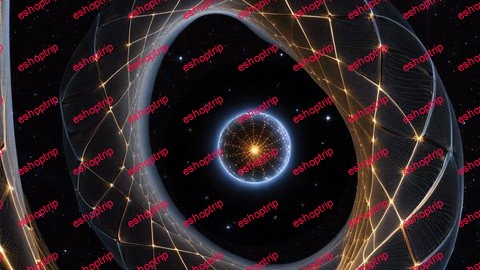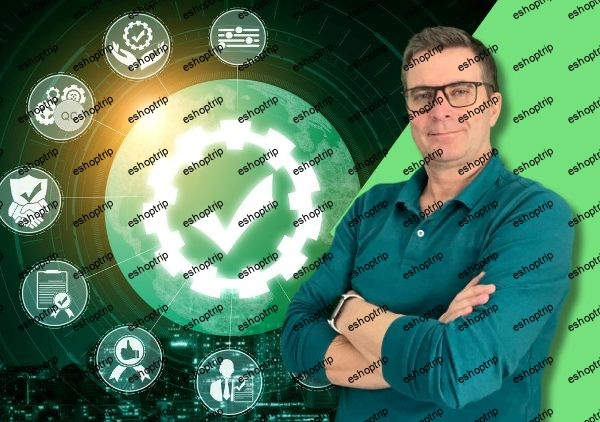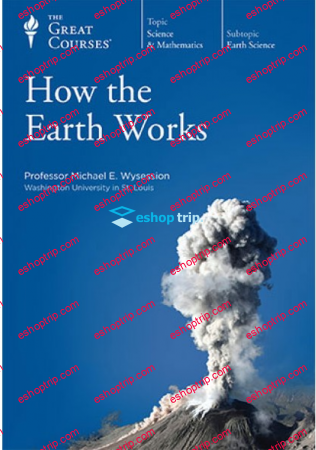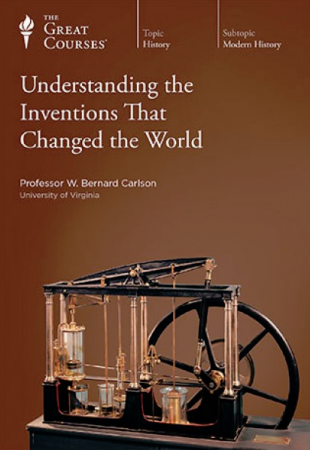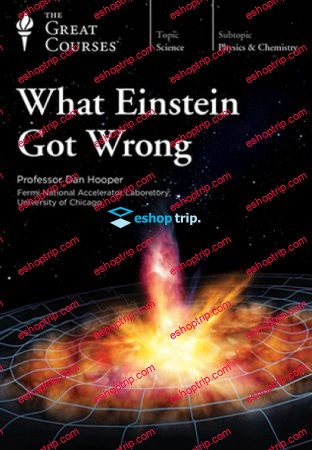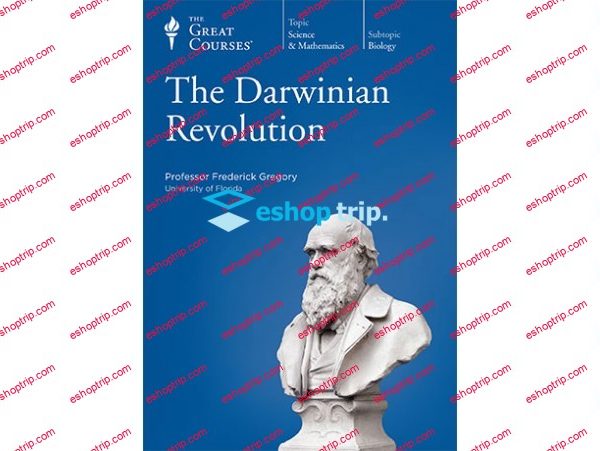Published 1/2024
MP4 | Video: h264, 1920×1080 | Audio: AAC, 44.1 KHz
Language: English | Size: 5.33 GB | Duration: 6h 40m
Quantum Aspects of Gravitation: gravitational waves, polarization, gravitons, vacuum to vacuum transition amplitudes
What you’ll learn
Quantization of Gravity in Weak Gravitational Fields: Learn the fundamental principles behind the quantization of gravity within the framework of QFT
Derive and Understand Classical and Quantum Aspects of Gravity: Step-by-step derivation of classical and quantum aspects of gravity
Probability to find gravitons
Solve Equations for a Massless Spin-2 Field
Apply Path Integral and Partition Function in Quantum Gravity
Quantify Gravitons Using QFT
Interpret Polarization of Gravitational Waves
Derive properties of tensors and familiarize with them by doing step-by-step calculations
Perturbations of the metric tensor
Inverse metric tensor expressed as a perturbation series
Ricci tensor expressed as a perturbation series
Determinant of the metric tensor expressed as a perturbation series
Requirements
Strong Foundation in Tensor Calculus
knowledge of Einstein field equations
Quantum Field Theory Background: prior exposure to quantum field theory, especially in the language of path integrals
Understanding of Complex Calculus (in particular, the Residue Theorem)
Description
The particles we encounter in nature, whether massive or massless, experience the gravitational interaction due to their energy content. Although gravitational interactions are way smaller than other interactions in nature, the incorporation of gravity in quantum interactions seems important (for example in the description of our early universe or black hole physics).You might hear people addressing the incompatibility between quantum physics and general relativity, as well as the need to make efforts in order to find the desired theory of Quantum Gravity.Sometimes you might hear people refer to String Theory, some other times to Loop Quantum Gravity. These theories have opened up new ways of looking at reality, for sure, but we might still be a long way from being able to test them.On the other hand, under certain circumstances, it is already possible to quantize gravity, by using the well-known quantum field theory approach. This is possible only when we are dealing with weak gravitational fields.In this course, we will see how the concept of graviton emerges quite naturally by considering small deviations of the metric tensor from flat spacetime.In particular, we will start from Einstein field equations of General Relativity, and we will assume that the metric tensor is a small perturbation of the Minkowski metric.From there, we will derive Einstein field equations up to second order of the perturbation.We will see that the equations derived in this way are those of a massless spin-2 field.After that, we proceed to solve the equations and find a way to express the metric tensor.After dealing with the classical equations, we switch to the quantum realm by quantizing the field, recalling the concept of path integral and partition function. The quantum theory will allow us to derive the average number of gravitons and understand the concept of polarization of gravitational waves.In all the derivations it is assumed that the student is familiar with tensor calculus, Einstein field equations, quantum field theory in the language of path integrals, complex calculus. Therefore, it goes without saying that the course is aimed at students who master these concepts. On the other hand, the equations will be derived step by step, leaving the time to digest the concepts.
Overview
Section 1: Introduction
Lecture 1 Introduction to the course
Lecture 2 Summary of the main equations in General Relativity
Section 2: Perturbation of the Minkowski metric and its determinant
Lecture 3 Perturbation of the Minkowski metric
Lecture 4 Trace of the logarithm of a matrix and its relation to the determinant
Lecture 5 Square root of the determinant in terms of the perturbation of the metric
Lecture 6 Rewriting the square root of the determinant part 1
Lecture 7 Rewriting the square root of the determinant part 2
Lecture 8 Proof of the Jacobi identity
Lecture 9 Neumann series
Section 3: Expansion of the inverse metric tensor, connection, and Ricci tensor
Lecture 10 Expansion of the inverse metric tensor
Lecture 11 Writing the connection in terms of the perturbation of the metric
Lecture 12 Rewriting the derivative of the connection
Lecture 13 Approximating the Ricci tensor part 1
Lecture 14 Approximating the Ricci tensor part 2
Section 4: Lagrangian for the perturbed metric and gauge fixing
Lecture 15 Lagrangian for a massless spin 2 particle
Lecture 16 Symmetries in the Lagrangian
Lecture 17 Imposing a gauge condition
Section 5: Field equations for the perturbation and gravitational waves
Lecture 18 Field equations for the perturbed metric
Lecture 19 Manipulating the field equations for the perturbed metric
Lecture 20 Field equations for the vector field
Lecture 21 Gravitational waves
Lecture 22 Rewriting the wave equation
Section 6: Solutions to the field equations, Causality
Lecture 23 Solution to the wave equation
Lecture 24 Causality of the solution
Lecture 25 Full solution to the field equations
Section 7: From the Classical to the Quantum Theory of Gravity
Lecture 26 Vacuum to vacuum transition amplitude
Lecture 27 Vacuum to vacuum transition amplitude for a weak gravitational field
Lecture 28 Rewriting the vacuum to vacuum transition amplitude in momentum space
Section 8: Completeness relation and polarization tensor
Lecture 29 Completeness formula in Minkowski space
Lecture 30 Using the completeness formula
Lecture 31 Simplifying the vacuum to vacuum transition amplitude
Lecture 32 Polarization of gravitons
Lecture 33 Recovering the classical result
Section 9: Gravitons and polarization of gravitational waves
Lecture 34 Average number of gravitons
Lecture 35 Polarization of gravitational waves
Lecture 36 Visualizing the two types of polarization
Section 10: Appendix
Lecture 37 Path integral derivation
Lecture 38 Some intuition behind the path integral
Lecture 39 Intuition behind the Fourier Transform of Heaviside Step Function
Lecture 40 Derivation of Poisson distribution
Physics Enthusiasts,Advanced Undergraduate and Graduate Students,Researchers and Practitioners,Quantum Gravity Enthusiasts,Curiosity-Driven Learners,Science Educators and Communicators,STEM (Science, Technology, Engineering, and Mathematics) Students: Students pursuing degrees in STEM fields who wish to explore interdisciplinary connections between quantum physics and gravity, adding depth to their scientific education,Philosophers of Science,Pre-Ph.D. Candidates
Homepage
https://anonymz.com/?https://www.udemy.com/course/quantum-gravity-from-gravitational-waves-to-gravitons/
